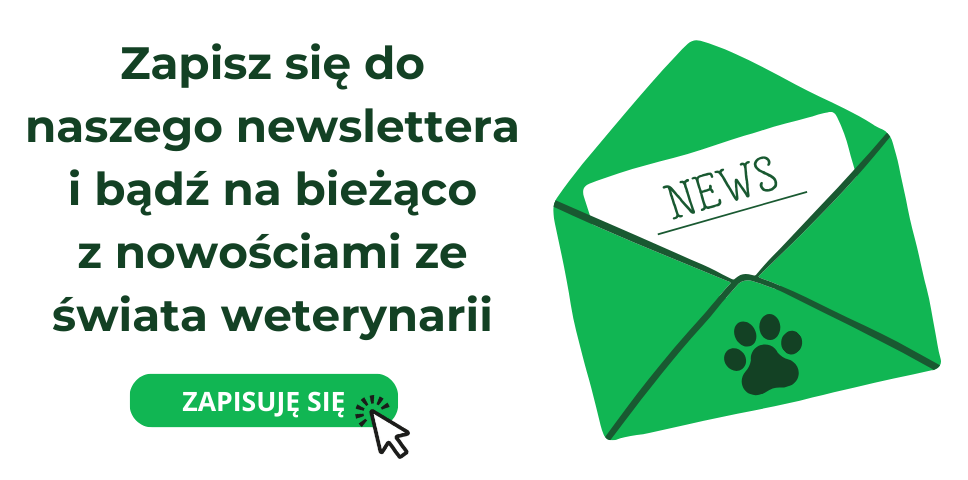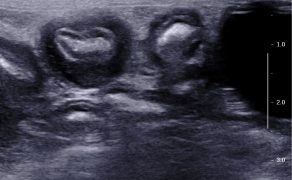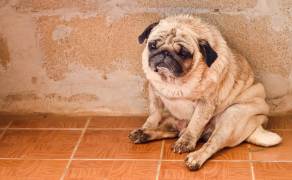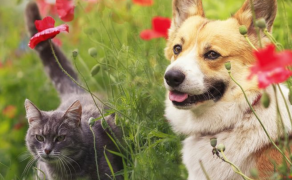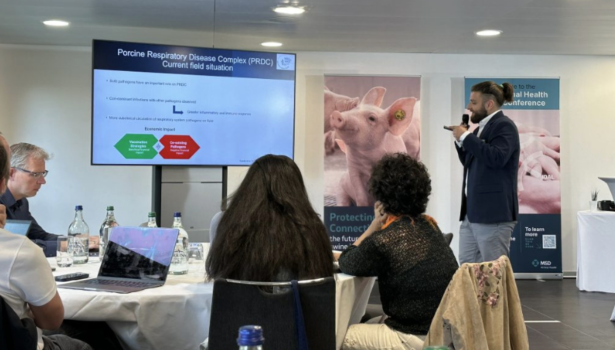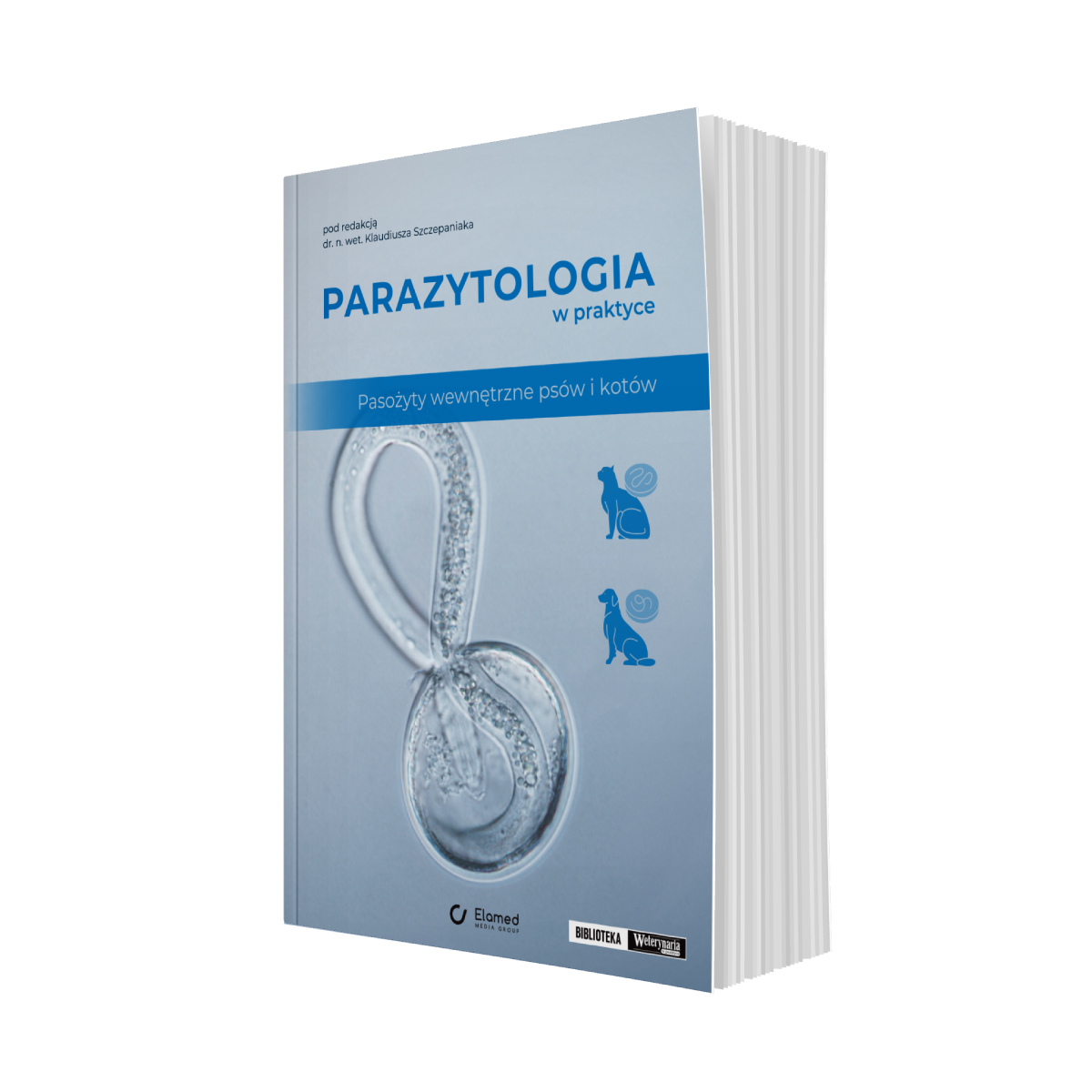Nieswoiste zapalenie jelit – aktualny problem w gastroenterologii kotów
Piśmiennictwo
- Baez J.L., Hendrick M.J., Walker L.M., Washabau R.J.: Radiographic, ultrasonographic, and endoscopic findings in cats with inflammatory bowel disease of the stomach and small intestine: 33 cases (1990-1997). „J. Am. Vet. Med. Assoc.”, 1999, 215, 349-354.
- Daniaux L.A., Laurenson M.P., Marks S.L., Moore P.F., Taylor S.L., Chen R.X., Zwingenberger A.L.: Ultrasonographic thickening of the muscularis propria in feline small intestinal small cell T-cell lymphoma and inflammatory bowel disease. „J. Feline Med. Surg.”, 2014, 16, 89-98.
- Dennis J.S., Kruger J.M., Mullaney T.P.: Lymphocytic/plasmacytic gastroenteritis in cats: 14 cases (1985-1990). „J. Am. Vet. Med. Assoc.”, 1992, 200, 1712-1718.
- Dennis J.S., Kruger J.M., Mullaney T.P.: Lymphocytic/plasmacytic colitis in cats: 14 cases (1985-1990). „J. Am. Vet. Med. Assoc.”, 1993, 202, 313-318.
- Evans S.E., Bonczynski J.J., Broussard J.D., Han E., Baer K.E.: Comparison of endoscopic and full-thickness biopsy specimens for diagnosis of inflammatory bowel disease and alimentary tract lymphoma in cats. „J. Am. Vet. Med. Assoc.”, 2006, 229, 1447-1450.
- Ferguson D., Gaschen F.: Feline idiopathic inflammatory bowel disease. „Veterinary Focus”, 2009, 19, 20-30.
- Garraway K., Allenspach K., Jergens A.: Inflammatory bowel disease in dogs and cats. „Today’s Veterinary Practice”, 2018, 8, 29-38.
- Hart J.R., Shaker E., Patnaik A.K., Garvey M.S.: Lymphocyticplasmacytic enterocolitis in cats: 60 cases (1988-1990). „J. Am. Anim. Hosp. Assoc.”, 1994, 30, 505 – 514.
- Janeczko S., Atwater D., Bogel E., Greiter-Wilke A., Gerold A., Baumgart M., Bender H., McDonough P.L., McDonough S.P., Goldstein R.E., Simpson K.W.: The relationship of mucosal bacteria to duodenal histopathology, cytokine mRNA, and clinical disease activity in cats with inflammatory bowel disease. „Vet. Microbiol.”, 2008, 128, 178-193.
- Jergens A.E.: Feline idiopathic inflammatory bowel disease: What we know and what remains to be unraveled. „J. Feline Med. Surg.”, 2012, 14, 445-458.
- Jergens A.E.: Managing the refractory case of feline IBD. „J. Feline Med. Surg.” 2003, 5, 47-50.
- Jergens A.E., Crandell J.M., Evans R., Ackermann M., Miles K.G., Wang C.: A clinical index for disease activity in cats with chronic enteropathy. „J. Vet. Intern. Med.”, 2010, 24, 1027-1033.
- Lecoindre P., Chevallier M.: Contribution to the study of feline inflammatory bowel disease: 51 cases (1991-1994). „Revue of Medical Veterinary”, 1997, 148, 893-902.
- Scott K.D., Zoran D.L., Mansell J., Norby B., Willard M.D.: Utility of endoscopic biopsies of the duodenum and ileum for diagnosis of inflammatory bowel disease and small cell lymphoma in cats. „J. Vet. Intern. Med.”, 2011, 25, 1253-1257.
- Tams T.R.: Feline inflammatory bowel disease. „Vet. Clin. North Am. Small Anim. Pract.”, 1992, 23, 569-586.
- Trepanier L.: Idiopathic inflammatory bowel disease in cats. Rational treatment selection. „J. Feline Med. Surg.”, 2009, 11, 32-38.
- Tucker S., Penninck D.G., Keating J.H., Webster C.R.: The clinicopathological and ultrasonographic features of cats with eosinophilic enteritis. „J. Feline Med. Surg.”, 2014, 16, 950-956.
- Waly N.E., Stokes C.R., Gruffydd Jones T.J., Day M.J.: Immune cell populations in the duodenal mucosa of cats with inflammatory bowel disease. „J. Vet. Intern. Med.”, 2004, 18, 816-825.
- Weiss D.J., Gagne J.M., Armstrong P.J.: Relationship between inflammatory hepatic disease and inflammatory bowel disease, pancreatitis, and nephritis in cats. „J. Am. Vet. Med. Assoc.”, 1996, 209, 1114-1116.
- Willard M.D.: Feline inflammatory bowel disease: A review. „J. Feline Med. Surg.”, 1999, 1, 155-164.
- Zwingenberger A.L., Marks S.L., Baker T.W., Moore P.F.: Ultrasonographic evaluation of the muscularis propria in cats with diffuse small intestinal lymphoma or inflammatory bowel disease. „J. Vet. Intern. Med.”, 2010, 24, 289-292.
dr hab. Marcin Jankowski, prof. nadzw.
Katedra Chorób Wewnętrznych z Kliniką Koni, Psów i Kotów
Wydział Medycyny Weterynaryjnej
Uniwersytet Przyrodniczy we Wrocławiu
Galeria
Mogą zainteresować Cię również
111
ALGORYTMY
POSTĘPOWANIA
w weterynarii
POSTĘPOWANIA
w weterynarii

